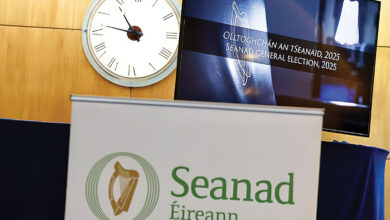Aogán Ó Fearghaíl: Cavan to Croker
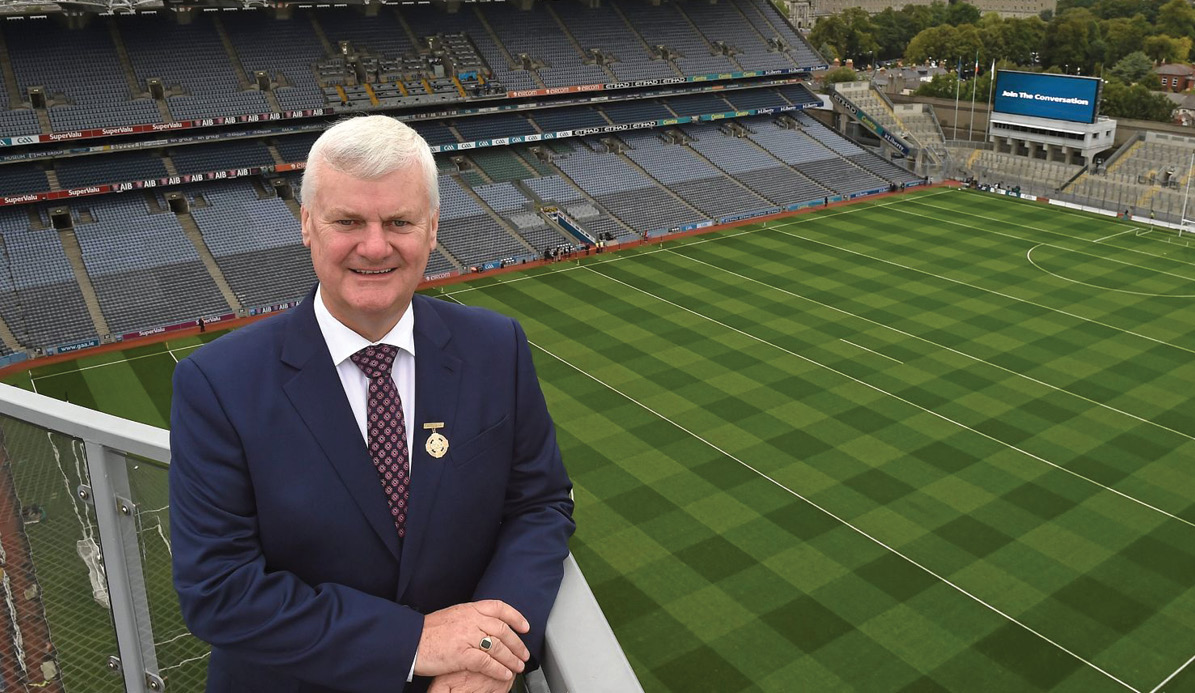
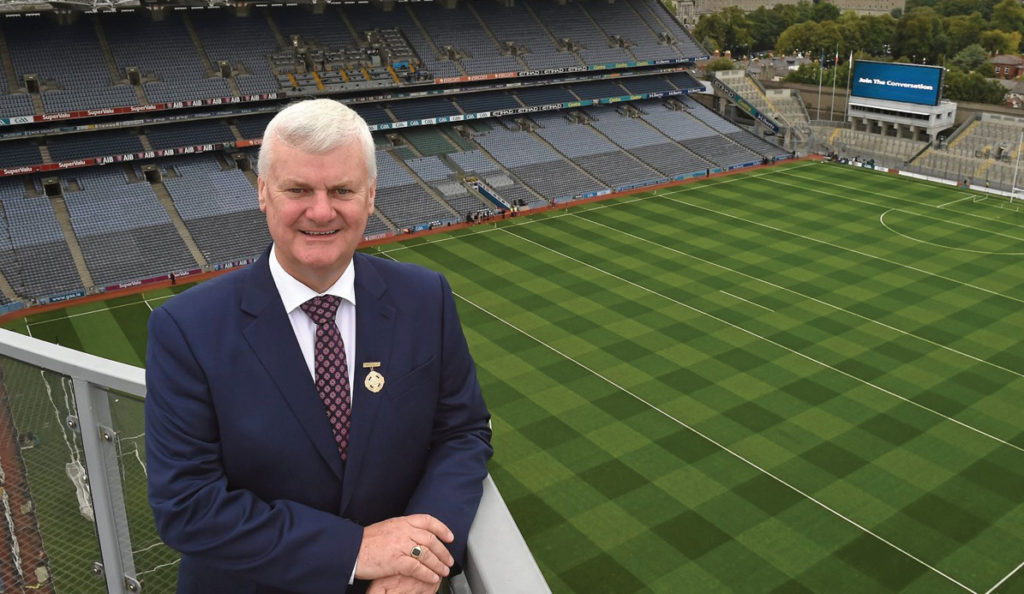
The Gaelic Athletic Association (GAA), a focal point of rural and urban communities alike, is perhaps one of the most renowned and enduring success stories of modern Ireland. Ciarán Galway visits Croke Park to speak with its 38th President, Aogán Ó Fearghaíl.
Elected in 2014, Aogán Ó Fearghaíl is the first Cavan native and the seventh Ulsterman to hold office as Uachtarán Chumann Lúthchleas Gael and previously served as Ulster Council President (2010-13). A graduate of St Patrick’s College of Education, Drumcondra the Dernakesh National School principal, and avid Gaeilgeoir, belongs to the Drumgoon Éire Óg Gaelic football club.
Opening the discussion, Ó Fearghaíl emphasises: “I am a volunteer leader of a voluntary organisation. It’s a 24/7 role and it needs to be. We have 2,200 clubs in Ireland, 465 clubs elsewhere around the world and around 30 GAA committees which are based here at Croke Park.
“As such, there are very few people in Ireland, in no matter what part of the island you come from, who haven’t heard of the GAA. It means an awful lot to me that the GAA in the Glens of Antrim represents the same ideals as the GAA in the Ring of Kerry; from the hills of Donegal to those in south Armagh, there’s no distinction. It’s all Ireland to us.”
Due to both the historical context and the role that it plays in Irish society, the GAA is, by its nature, complex and the President likens it to “a beehive”. Combining several sporting codes and cultural pursuits across clubs, counties, provinces and Croke Park, “if you take a fleeting glance, much like the activity of bees, you may think ‘this is chaotic, there’s no clear rationale’. However, when you take a closer inspection, you realise that it is underpinned by clear structures and a very intricate system”.
President’s role
Outlining the President’s raison d’être, he notes: “It is very much to ensure that the policy of management, of Central Council, is carried out through our committees and clubs. We are a connect between the different bodies, take the pulse of the association and ensure that we evolve in tandem with the changes of modern Ireland.”
One of the most significant challenges for any President of the GAA is getting that balance right. “There’s a balance between preserving what is very intrinsically our heritage, culture and tradition with the dynamic Ireland we live in. That’s not always an easy act,” suggests Ó Fearghaíl.
Volunteers
Another priority of the President is the constant need to energise the volunteers who lead the association. “If you give me a very busy club, and I don’t know any club that isn’t busy, but if you take a club like Darragh Cross in Down, or a club like Dowra on the Cavan/Leitrim border, or a club like Kilmacud Crokes in Dublin, the number of teams they have is phenomenal.
“They all have ambitions, whether to build more dressing rooms, to drain another field or to make sure that all their players and coaches are trained to the highest standard. That is not easy and it’s why we would have invested a lot of time and I put a lot of energy into retraining and upskilling our volunteers.”
Paying tribute to this volunteer ethos, Ó Fearghaíl notes: “No matter what part of Ireland you’re in, the local GAA people are the heads of their community. We produce great civic leaders. These are the kind of people who are good for Ireland and are making sure that we retain a community feel to this country.”
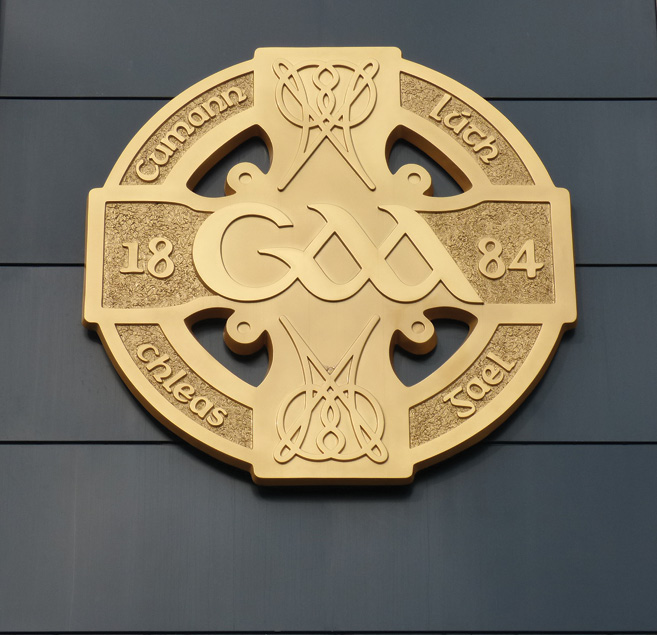
“There’s a balance between preserving what is very intrinsically our heritage, culture and tradition with the dynamic Ireland we live in. That’s not always an easy act.”
Migration challenges
The GAA leader acknowledges rural depopulation and urbanisation as representing two parallel yet equally significant challenges. Across large swathes of rural Ireland, it is increasingly difficult for clubs to simply get enough players to form a team, sometimes resulting in an inevitable amalgamation. Yet there is a prevalent determination to retain the integrity of the name and the club.
Ó Fearghaíl recounts several anecdotes relating to players who commute significant distances to train and play with their home clubs each week. “I don’t regard it as inhibiting affinity to the local place, I think that having a sense of the local is the essential bedrock of the GAA and I still see it.
“The sense of place is still there, but it’s a challenge for clubs to simply retain numbers. There isn’t a lot that the GAA can do about that. The big thing that rural Ireland needs is infrastructure; if you had effective broadband right across the country, for instance, then you could run a business from anywhere. We in the GAA would be encouraging that to happen.”
Increasing urbanisation is also a challenge, particularly across the east coast as people pour into city regions from Belfast to Wexford. Ó Fearghaíl insists that clubs must be ready to capitalise on this shift. “I’m not sure that this is always happening,” he suggests. “Take a county like Monaghan, which is constantly achieving very highly with a small base, and yet you have counties here in Leinster with three or four times the population of Monaghan and they are not achieving at all. We must adjust.”
Emigration
While recognising the impact of emigration, Ó Fearghaíl speaks optimistically on what is a continued trend. “There are young people now who are leaving Ireland furnished with great skills. They’re coming out of third level colleges and going out around the world, enlivening and enriching the GAA clubs abroad, bringing great strengths to the countries they enter. Crucially, however, many, through time, are also coming back.
“It doesn’t cause me any worry whatsoever; I’m delighted to see young people have the courage to go to Abu Dhabi or San Francisco and bring their skillsets with them. It’s interesting the difference I see, when I go to Britain or America, for example. The GAA there was built mostly by men in the 50s and 60s who went over with a shovel over their shoulder and ‘Paddy’ was working on the motorway. Now ‘Paddy’ is going around the world as the IT professional, as the business manager, as the quantity surveyor and the engineer.”
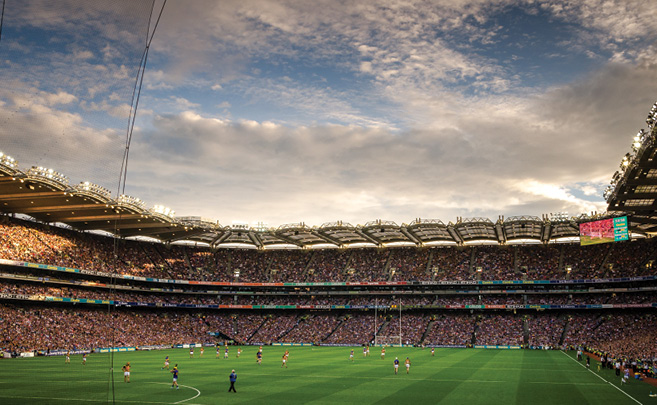
“There is no organisation in Ireland, in sporting terms, that has more activity than the GAA. That’s a wonderful challenge to have and it brings challenges in terms of fixtures.”
Fixtures
The often-incompatible relationship between the intercounty and club seasons has been an enduring topic of division and debate. Again, Ó Fearghaíl is sanguine: “A worse challenge to have, whether you’re talking about business, or politics, or sport is inactivity. There is no organisation in Ireland, in sporting terms, that has more activity than the GAA. That’s a wonderful challenge to have and it brings challenges in terms of fixtures.”
Outlining recently adopted and significant changes, the Association President details: “We’re going to have additional time as an alternative to replays and that is going to create enormous space for fixture making. Likewise, we played the football National League Final this year in the early days of April and next year will be even earlier.
“We’re going to break with tradition and play the All-Ireland Finals early, which is an example of how the GAA can take a bold leap of faith and that we can and will abandon tradition if necessary. From 2018 onwards, the All-Ireland Finals will be played in August. Why are we doing all of this? To make sure that we have a place for our clubs, to make sure that there is space for fixtures, to cater for this huge level of activity. It’s a balance. We have to get the balance right between the public interest in watching inter-county games and creating space for the clubs.”
Senior Football Championship
Ó Fearghaíl is adamant that the new structure will enliven the All-Ireland Senior Football Championship. “I always wanted Central Council to take the lead on our competitions. We established very clear principles. The first is that, regardless of some commentary, people want to keep their provincial championships. While Leitrim may not aspire to winning an All-Ireland Final soon, they could win a Connacht title. My own county, Cavan, haven’t won an All-Ireland Final since 1952, but we just could win an Ulster title. That would mean a huge amount, and over the years I’ve seen the excitement that that can generate, such as we witnessed in 2013 when Limerick won their first Munster Hurling Championship title in years.”
As such, retention of the provincial championships left little room for manoeuvre with All-Ireland Championship structures. “Anything that extends the playing season couldn’t be considered. In other words, an elongation of the playing season was unacceptable because clubs could never utilise their county players.
“Therefore, we’ve got agreement with the provincial councils that they will play their championships over a tighter timeframe; so instead of one game every week, there’ll be two games on many weekends. Then when we get to the quarter final stages of the Championship, the eight teams will play in a group structure in which they will each have a major game in their home province. We have a lot of great stadia and many are underutilised, so we want to be able to say that if Down, for example, can qualify then it would be wonderful to see a side like Kerry visiting to play in Newry, with one game in Croke Park and one in Killarney.
“So, you have three games instead of one and this will still allow us to be completed by the end of August. The overall objective is that we will have a condensed Championship, one that is finished earlier and one that is much more exciting.”
Rules
Responding to the suggestions that a proliferation of new rules could inadvertently overcomplicate the codes, Ó Fearghaíl argues: “You can never say ‘that’s it, we’re going to burn the rulebook and keep things as they are now’. Players, by their very nature, from when they first play in the playground, will always attempt to circumvent the rules. It’s a natural human instinct and I observed it myself as a teacher. When players compete at an adult level they will push to the limits. There’s always a need to watch rules and be on top and ready to make some changes. Though I don’t think there should be many and we have had very few.”
The only significant change to the rules implemented during Ó Fearghaíl’s term as President was the introduction of the mark. The rule was initially castigated, though the GAA leader detects a change in opinion. “Now during our football games, if someone exhibits that wonderful fielding skill, which happens around three or four times on average each game, the player is protected. I think the mark has been a good addition for the game and it certainly hasn’t done any damage to it.”
However, Ó Fearghaíl is equally assertive that rule changes require honest analysis. While maintaining that the black card is a sound concept, he concedes that there is an inconsistency of application. “That does bother me. There are times when I have witnessed referees applying a black card when they wouldn’t and I have seen referees misapply the black card. However, when something isn’t exactly the way you want it, it doesn’t mean that you throw it out completely. It means that there is need for greater education and that there is need for greater work. Our referees and our Referees’ Panel need to constantly up their game and ensure that we apply it more consistently than we currently do.”
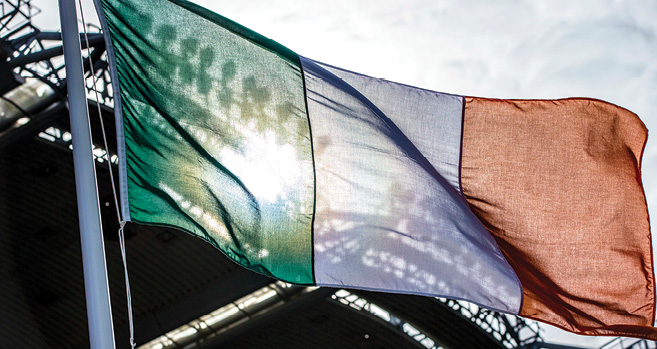
National aspirations
The most controversial phase of the current presidency materialised late last year during a GAA/GPA All-Stars tour of the Middle East when Ó Fearghaíl responded to media questions regarding the GAA’s use of national symbols. “I was disappointed with how some media outlets latched on and portrayed my comments. It was hurtful to me because I would be very much of a nationalist position and I would also be very conscious of the GAA’s position. We grew out of a period of cultural and national revival which created the circumstances in which an independent Ireland could be built. As such, we very strongly value Amhrán na bhFiann and hold the national flag in the utmost respect.
“I don’t regret my choice of words at all, but I certainly regret how some media outlets portrayed them. I haven’t changed my opinion. It was totally misreported and I was misrepresented in some quarters. We in the GAA aspire to a 32-county united Ireland. That’s very much part of our aim and in that new scenario there could well be changes, but in advance of this occurring there will be absolutely no change to the flying of our flag or the singing of our anthem. I still hold that view.
“As Irish people, I believe we must always be open to the aim of an agreed 32-county Ireland. That is the bottom line. However, you can’t say that and then attach certain conditions. I hope that Amhrán na bhFiann and the flag we currently have will be those we have in a new Ireland, but in looking to the future, we cannot determine what might hold. In those circumstances, there should be an openness to a new dispensation.”
Vision
Ó Fearghaíl is unambiguous about the GAA’s vision for the future. “During the centenary last year, many people read The Proclamation of the Irish Republic. If you look closely at it, you’ll see that the only organisation to truly approximate towards the vision contained in those words is the GAA. We are based in a 32-county Ireland, we are about inclusivity, we are about fairness and we are about cherishing all people equally.
“The vision for the GAA is to continue to ensure that we are always relevant in all our communities, that we remain inclusive, volunteer-led and that people enjoy what the GAA has to offer, worldwide as well as in Ireland. We should be relevant in every community.” While the GAA currently holds a significant relevance at the heart of many communities, the President again stresses the importance of inclusivity and asserts: “There are places, especially in urban centres such as east Belfast, that we would like to have more of a presence. We need to make sure that everyone can find their place.”
Professionalisation
Ó Fearghaíl is equally assured of the continued survival of the amateur ethos. “I don’t think there is a trend towards professionalisation. I think it’s the opposite. I’m delighted that we have a deal with the Gaelic Players Association for the next five years. They’ve agreed very clearly that it’s not on their agenda. It’s not what people are seeking or what we are working towards.
“Of course there is a degree of commercialisation within the GAA; we have to fund what we do. We need coaches to go into our schools and we need to have a level of recognition. If you take rugby and soccer, our two main competitor sports, they are funded internationally through mega deals with various companies, so it is only natural that we as the GAA would try to facilitate a commercial revenue at some level.”
The President maintains that the amateur ethos must be preserved “because it is stitched into the fabric of our identity. It must always be about love of the local, attachment to our community and that wonderful enjoyment that GAA people gain from their selfless commitment”.
“We are not going to become a professional organisation. That would be a very different GAA. The GAA that I represent, is, at its heart, a volunteer-led amateur association and will remain so,” he concludes.





